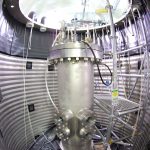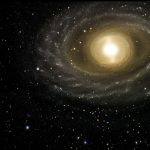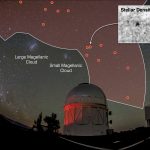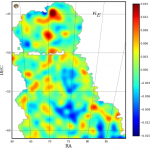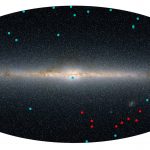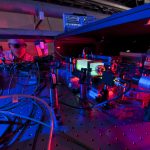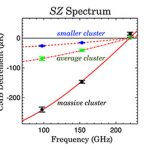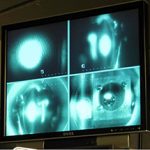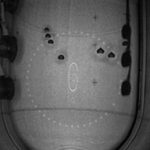The PICO-60 detector was originally called “COUPP-60,” with COUPP standing for “Chicagoland Observatory for Underground Particle Physics.” It was designed and built by Fermilab in collaboration with the University of Chicago and Indiana University, South Bend. Work began at Fermilab in 2005, and, after extensive testing, the detector was moved to SNOLAB in 2012. “We’ve been… More »
Highlights
“Art of Darkness,” a new show featuring images from the Dark Energy Camera, runs through April 29, with an artists’ reception planned for March 18 from 5-7 p.m. Imagine being able to see 8 billion light-years into space. Imagine feeling like you are near enough to another galaxy to count its spiral arms or close… More »
New dwarf galaxy candidates could mean our sky is more crowded than we thought Scientists on the Dark Energy Survey, using one of the world’s most powerful digital cameras, have discovered eight more faint celestial objects hovering near our Milky Way galaxy. Signs indicate that they, like the objects found by the same team earlier this year, are… More »
Analysis will help scientists understand the role that dark matter plays in galaxy formation Scientists on the Dark Energy Survey have released the first in a series of dark matter maps of the cosmos. These maps, created with one of the world’s most powerful digital cameras, are the largest contiguous maps created at this level of detail… More »
Scientists on two continents have independently discovered a set of celestial objects that seem to belong to the rare category of dwarf satellite galaxies orbiting our home galaxy, the Milky Way. Dwarf galaxies are the smallest known galaxies, and they could hold the key to understanding dark matter and the process by which larger galaxies… More »
New Fermilab experiment will test the nature of the universe A unique experiment at the U.S. Department of Energy’s Fermi National Accelerator Laboratory called the Holometer has started collecting data that will answer some mind-bending questions about our universe – including whether we live in a hologram. Much like characters on a television show would… More »
The cosmic microwave background is the radiant heat left over from the big bang. It was emitted nearly 14 billion years ago, just 380,000 years after the big bang, and has traveled across literally the entire observable universe. This makes the CMB an ideal backlight to find the most massive, distant structures in the universe,… More »
Last month the Holometer, Fermilab experiment E-990, reached its design luminosity, building up more than 1 kilowatt of infrared laser power stored in a 40-meter-long Michelson interferometer. This light intensity corresponds to more than 1022 (ten billion trillion) photons per second hitting the interferometer optics. It also allows scientists to measure the optics’ positions to… More »
The Dark Energy Survey collected more than 34,000 exposures during its science verification (SV) phase, from November 2012 to February 2013. It also began its first official season of observations on Aug. 31. Among the millions of astronomical objects imaged by DES so far, there are rare instances of “strong lensing” systems, where the effects… More »
The headline story in the April 15 issue of Fermilab Today featured the observation by the CDMS experiment of three candidate events that could have been produced by dark matter. That result, combined with several other possible signals, points to a dark matter candidate that is much lighter than expected. While no one is claiming… More »










